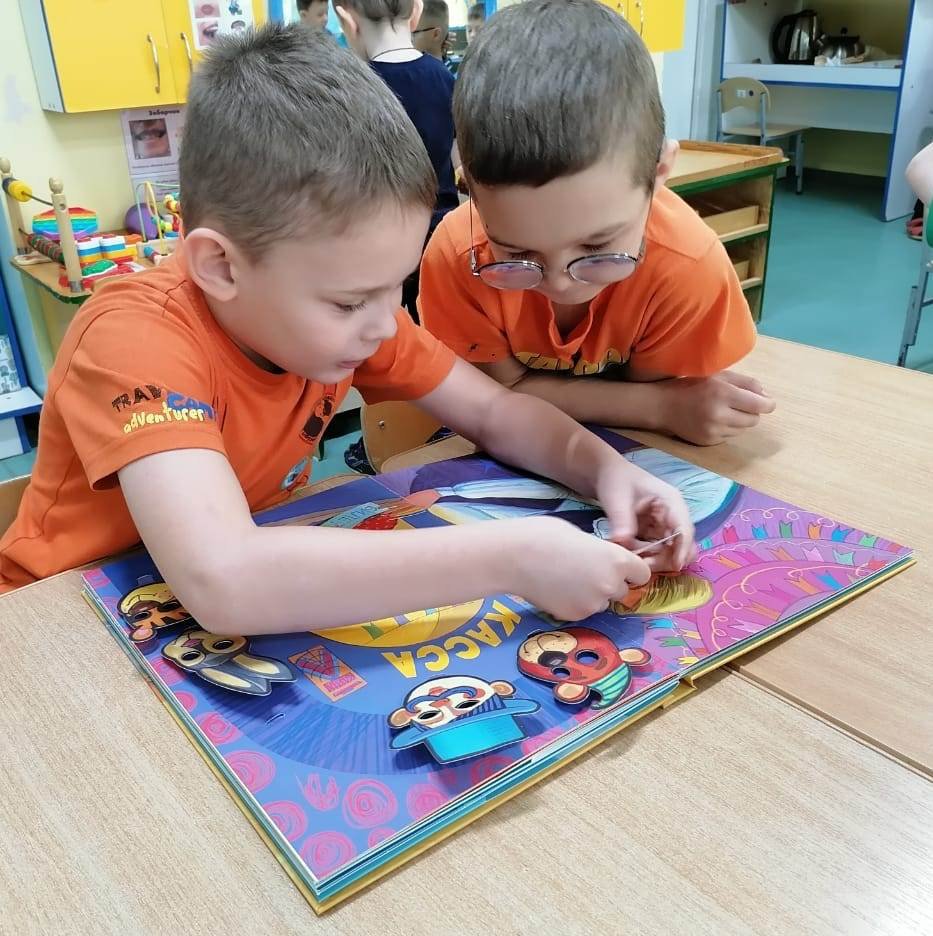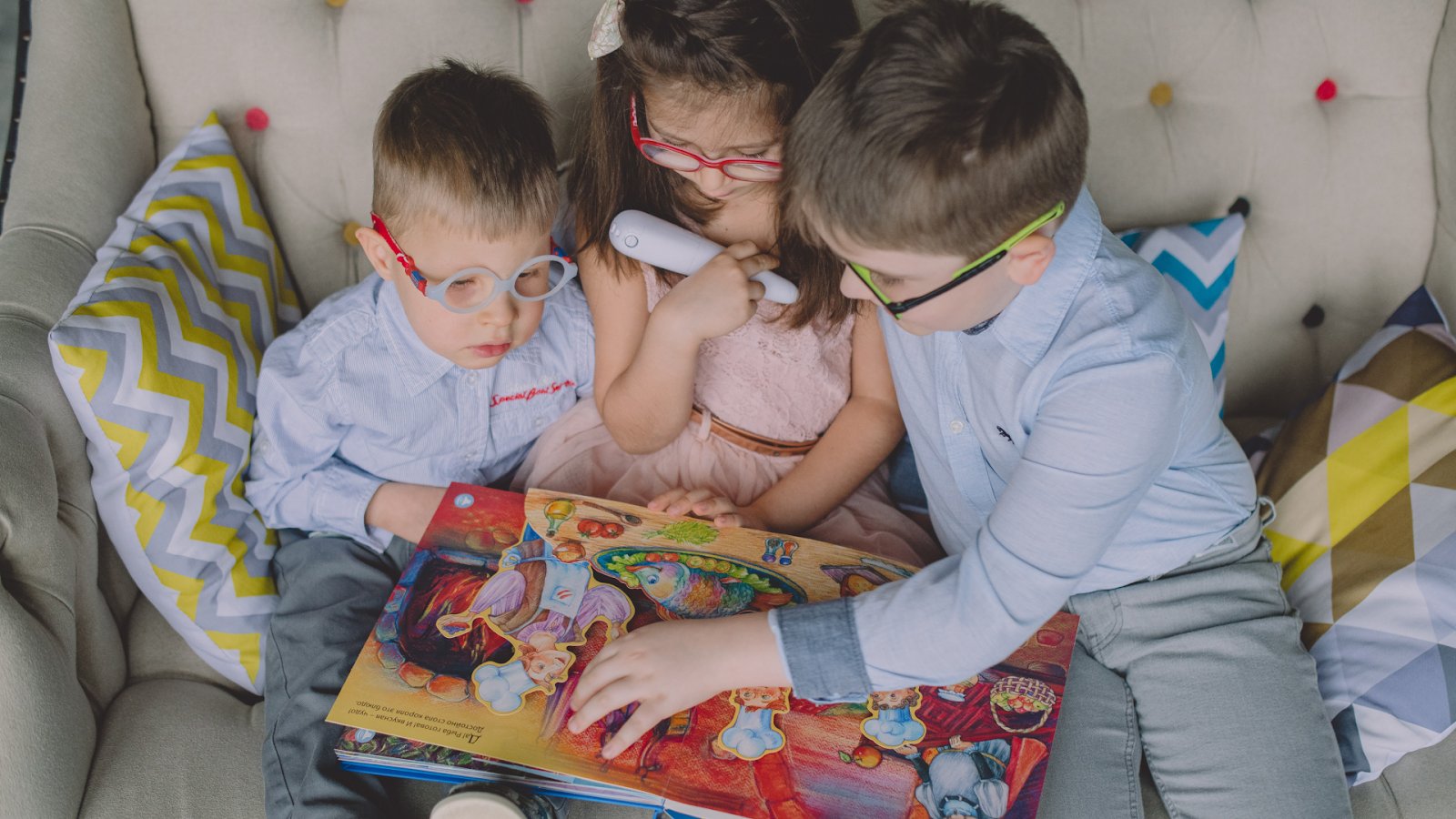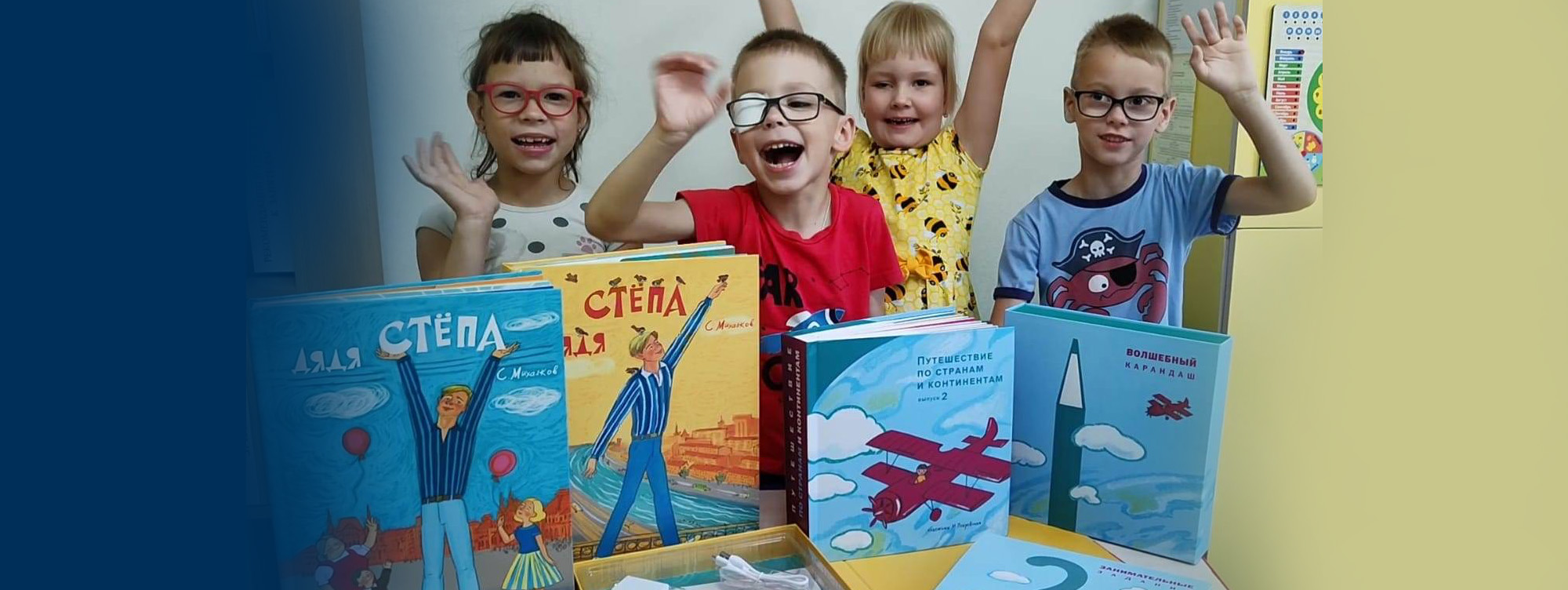What is the use of a book without pictures or conversations?" said the main character of Lewis Carroll’s Alice in Wonderland.
Books without pictures do not attract children much. While studying the illustrations, kids learn things about the world, get a better understanding of plot lines and learn to retell them. And through the work of the Picture Books For Small Sightless Children foundation all this becomes available for young sightless readers. Today Tatyana Degen, chairperson of the executive board of Picture Books For Small Sightless Children foundation, tells Special View about how the foundation works and the books it has already published.
Why and how did you get the idea to create illustrated books for sightless children?
In the early nineties, we were making greeting cards using relief stamping technology, and at some point, Yuri V. Mikadze, Ph. D., Moscow State University psychology faculty professor, the person to become one of the founders of our organization, said that this technology could be useful in creating books for visually impaired children.
We began developing this idea and addressed The Institute of Correctional Pedagogy for a consultation, as its specialists, among other subjects, were researching the problems of image perception by visually challenged children.It turned out that books for totally or partially sightless children with illustrations that could be studied by touch were much needed, but there were precious few such editions.
It takes a while to create a handmade tactile book, and in a single copy at that, but the technology we used for postcard printing would allow us to publish multiple copies of relief image editions. So we got down to printing our first books with quality raised pictures and relief edges, with illustrations painted in vivid colors, with figures distinctly set apart from one another.
The illustrations in our books proved to be understandable for sightless and visually challenged children, at the same time staying attractive for readers with good eyesight. Thus both ordinary and visually impaired kids can read the same books, which makes them equal and helps develop an inclusive environment.
Today we are issuing two sets of books every year, 3,000 copies each, but, according to experts, estimated number of sightless elementary schoolchildren in Russia exceeds 35,000. It means that illustrated tactile books are in high demand.
Picture Books For Small Sightless Children is what we do and the name of our foundation.

Audio description: a colored photo. A brightly lit kindergarten room. Two boys of about six wearing orange T-shirts, are sitting at a table, absorbed by studying a big book in front of them. The illustration shows a circus ticket office where a visitor is buying a ticket. Tactile images of circus characters, such as a bear, a tiger and an animal tamer, are grouped along the perimeter.
What was your inspiration for creating the foundation?
Sightless kids, as well as any other children, love getting presents. And if they can touch the present, understand it by feel, their joy is endless. We want to make books with tactile illustrations available for every sightless child, we want every sightless child to have them at home, to be able to turn to the books at any time. But in order to give such presents, we need sponsors and patrons who could finance the manufacturing process.
The charity foundation was created as a solution of this problem. Within the framework of Books As A Present program, we attract commercial organizations and other charity foundations that could pay for production of books with tactile illustrations and give them to sightless children. It is a costly process. We are getting subsidies and grants, but those cover only one third of our expenses, and the rest falls on donations from commercial organizations and individual benefactors.
How do you attract benefactors to sponsor the publishing of books for sightless children and why can this initiative be interesting for them?
At the first stage of the Books As A Present program implementation, we studied the All-Russian Database Of Specialized Libraries And Educational Institutions For Visually Challenged Children, determined the number of such children aged 3 to 6 living in different regions of the country and found out what kind of books they needed and the number of copies to be provided. Based on these calculations, we began looking for major sponsors and inviting them to give books with tactile illustrations to sightless and visually challenged children who were attending specialized kindergartens and schools in the sponsor’s region of residence. Under the subsidy contract with Moscow City Mass Media and Advertising Department, more than two thousand young visually challenged Moscow residents are provided with our book sets. The uniqueness of this program is that the sponsors and representatives of Moscow City Government give these book sets to the children in person, during festive events at schools and kindergartens. This is the way they show their social responsibility.
If sightless or visually challenged children don’t have tactile picture books at home, where can they get a chance to study them?
Of course, we would like all sightless kids to have tactile books at home, but this is not always possible. For that reason, we are developing our collaboration with regional libraries for the blind and try to give them 3 or 4 copies of each of our editions. Here we are supported by grants from special social organizations such as Cultural Fund, Russian Geographical Society, Presidential Grants Fund. Thus, young visually challenged readers from many cities have the opportunity to study our books at a library or even take them home for several days. As a publisher, through this we enlarge our readership.

Audio description: a colored photo. Children are playing sitting at pale-colored square tables. In the foreground, five children, two boys and three girls, are studying colorful books with large 3D pictures, animatedly showing each other bright panoramic illustrations.
Tell us about the books you printed and the ones you are planning to publish in the near future.
In our work we are trying to stick to most popular fairy tales and education aids. The first book we published was Kolobok fairy-tale (analogous to The Gingerbread Boy tale). Children always take it in well, plus one can use various tactile materials for such an edition.
Also, we published the ABC book which was the first edition where we used the Reading Pencil technique, in addition to the printing technologies. The Reading Pencil (or The Magic Pencil) looks like a plastic pen which scans microcodes printed on a page and plays out a fairy-tale, or the voices of the characters, nature sounds, animal voices and musical fragments. Thanks to that, our sightless readers are able to study our books not just with the help of tactile pictures, but with sound records.
After the ABC book we published Jolly Counting Book, The Titmouse’s Calendar, A Trip Around Russia, and now we are publishing book sets informing kids about different continents and countries. In such editions, we tell our readers about customs and traditions of different countries and fairy-tales that originated there. All these books are included into sets that comprise the book itself, the Reading Pencil and tasks that help the parents discuss the book after the child has read it, remember the plot, solve the riddles and rebuses related to the main topic of the book. Also, the set includes a special cardboard bag which transforms into a stage scenery, and a number of cardboard figures, a paper theater upon your table.
These book sets were highly appreciated by both visual impairment specialists and parents of visually impaired kids because they allow a visually disabled child to work with the book unassisted. At first, the child studies the book together with an adult, and afterwards he or she can read it again and again with the help of tactile illustrations and the Magic Pencil. Such interaction with the book improves the speech of sightless and visually impaired kids, nudges them to communicate with other people and catalyzes their intellectual development.

Audio description: a colored photo. Three children in glasses with brightly colored rims are sitting on a pale couch leaning over a big colorful book. A girl in a pink dress sitting in the center is holding the book on her knees. She is about six. She is clutching the Magic Pencil in her right hand. This is a white carrot-shaped interactive device to help a child read the book. It gives voice to the pictures. Two boys in pastel shirts and trousers are sitting on both sides of the girl. One of them is not more than two, the other one is older, he is reaching his hand to the book’s bright tactile illustrations.
How can sightless and visually impaired children get such books for their home libraries?
All the books are published thanks to grants and sponsors, so the only way to get them is through the Books As A Present program. We receive the requests from specialized educational institutions by mail, and through our website we get applications from the parents of visually disabled children. Then we include them into the program, and if we have such an opportunity, we give the children our books as a present. Every year we print a specified number of books and give them to visually disabled children via organizations they attend or study at.
We don’t do reprinting, that means that if last year we issued two sets of books in 6,000 copies and a few were left in out storage after distribution, we could present them to sightless children in person, but people could not order the second edition of the book that had been published.
Only the ABC Book was printed in twice as much copies, but it got into the Presidential Grants Fund program and so we were able to double the circulation. Sometimes we upgrade our editions: for example, we issued good books where spacial concepts were explained to children in rhymes. These were published without the Reading Pencil, but specialists in this field rated our books highly, so now we are preparing an upgraded edition that will include the Magic Pencil. Anyway, parents can apply for the participation in our program, and using the money the foundation will collect via charity service at Mos.ru and via Active Citizen website we will give the books to the children.


